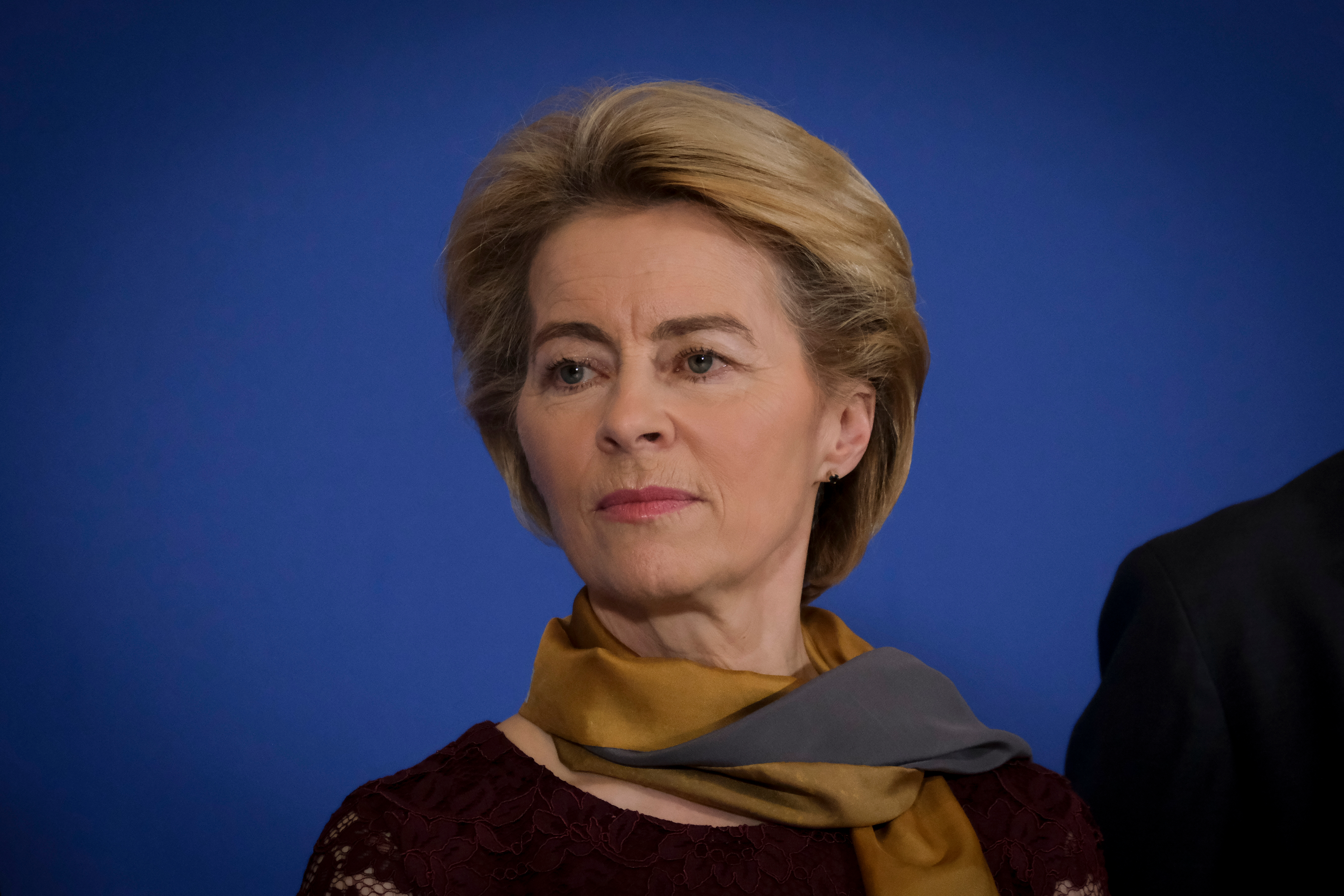
Ursula von der Leyen, president of the European Commission (foto © Alexandros Michailidis/Shutterstock)
Women constitute less than a third of the members of governments in the EU member states. This share has been increasing over the years and it is above 50% in a few countries. However, women still struggle when it comes to access to the most influential positions in the government
(This article was originally published by Openpolis as part of the EDJNet project)
When it comes to the proportion of women in European politics, some countries are far more equal than others. On the one hand, we have countries where key positions of power are still almost exclusively held by men, and on the other, countries where women have real access to key roles.
As of 26 January 2021, Estonia has for the first time in its history a female prime minister, Kaja Kallas. This brings to 5 the number of women currently heading the EU’s national governments. This amounts to 22 percent, which increases slightly if we add the European Commission, currently headed by Ursula von der Leyen.
Looking at other key roles, the situation does not improve. While at the level of overall representation the presence of women in European governments has, on average, increased over the years, access to positions of greater power is still limited.
Female presence in EU governments
According to the most recent Eurostat data, as of 2019 only 31.4 percent of Member State government members are women: less than a third, but nevertheless an improvement over time. In fact, this represents an increase of 11 percentage points over 15 years. However, analyzing national data, this clear progress has not touched all countries equally.
From 20.5 percent of female government members in 2004, France almost reached parity in 2019, with 48.6 percent — a growth of 28.1 points. Slovenia’s figure grew by the same amount, with Italy close behind (23.3 points). However, it must be stressed that both Slovenia and Italy started in 2004 with levels of female representation among the lowest in Europe. Respectively, these countries had only 7.1 and 10.5 percent of women in government positions.
In addition to changes over time, we should also look at the current situation. Considering only 2019 data, the most recent available, Finland (57.6 percent) and Sweden (52.2 percent) stand out, followed by Austria and Spain, both at 50 percent. In contrast, women are poorly represented in the governments of Malta (8.7 percent in 2019) and Greece (9.8 percent), the only countries falling below 10 percent.
Malta also has the sharpest decline in the presence of women over the 15 years taken into consideration. In 2004, women in government accounted for 15.8 percent, a figure which has fallen by 7 points. Apart from Malta, the only other country where there has been a drop is Germany, falling from 46.7 percent in 2004 to 40.8 percent in 2019. However, the current percentage is the seventh highest across the European Union.
Germany is also one of the 5 countries that currently, as of February 2021, have a woman as head of government. The others are Denmark (Mette Frederiksen), Estonia (Kaja Kallas), Finland (Sanna Marin) and Lithuania (Ingrida Šimonytė). In these countries, unlike Germany, other key roles are also held by women.
Access to key government positions
For the purposes of analysing the presence of women in the roles of greatest political influence in EU countries, we have identified 6 key positions. One is head of state, which in some countries corresponds to the president of the republic and in others to the king or queen, while five are government positions, selected on the basis of their relevance to both national and European politics: head of the executive; minister of economy; minister of foreign affairs; minister of the interior; minister of health.
Countries in the North and North-East represent an exception to most other EU members, standing out not only for the presence of women in government, but also in terms of key positions, 3 of which are held by women. These states are joined by Spain, with three female ministers (the economy, foreign affairs and health), and the European Union. In addition to President Von der Leyen, commissioners Ylva Johansson for home affairs and Stella Kyriakides for health and food safety stand out.
Belgium, Luxembourg and the United Kingdom follow, with two key roles, including Minister of the Interior, held by women in all three countries. In addition to the states with only one role each, we should also note the absence of 10 EU members from the chart above. These are France, Austria, Cyprus, Croatia, Latvia, Malta, Poland, Romania, Slovenia and Hungary, where the six key positions are all held by men.
This is particularly striking for France, where in 2019 the female presence among members of the executive was at 48.6 percent. In July 2020 there was a change of government, from that of Édouard Philippe to that of Jean Castex. However, looking at the key positions even in the previous executive, it emerges that none of them were held by women. All of this indicates that despite a high proportion of women (48.6 percent), all of the most powerful roles are held by men. This is also reflected in the current government.
Among all the Member States’ interior ministers, women account for 34.5 percent, including the UK government and the European Commission. This is the highest share of women holding any of the key roles in question. The position with the lowest number of women is Minister of the Economy, entrusted to only four women in the 29 executive bodies considered (13.8 percent). A significant figure, considering the centrality of economic and financial issues in the life and development of a state. Finally, it should be noted that in no country do women hold more than 3 of the 6 key positions.







 To Top
To Top